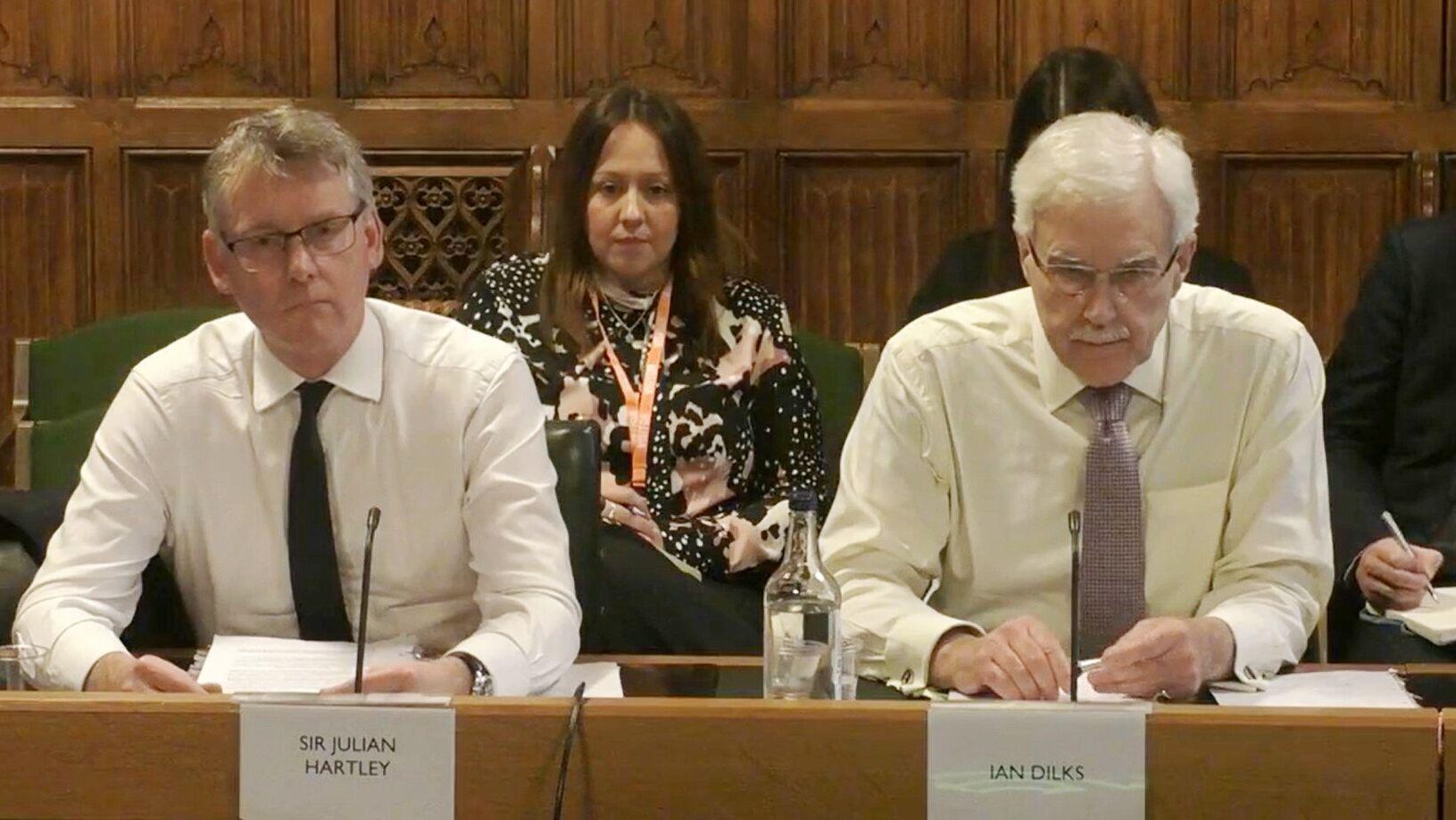Golden goodbye or exit to nowhere?
With the relentless upheaval in the NHS, voluntary redundancy may seem like a chance to get out while the going’s good. But not all schemes offer a good deal and government rules and tax policy can eat into your settlement.

Anyone who has worked in the NHS for long knows that you’re never far away from the next reorganisation. Particularly in England, changing NHS structures is the go-to health policy intervention for politicians of all colours – from establishing and then disbanding quangos and arms-length bodies, to the constant repackaging of commissioning bodies with new three-letter monikers.
The Lansley reforms of barely a decade ago were ripped up by the 2022 Health and Social Care Act. But barely six months into their statutory life, the Integrated Care Boards created by the 2022 Act were told to restructure and downsize, alongside NHS England, which was still going through its own government-mandated merger.
Reform is not always bad. As our population ages and other demographics change, the NHS must change too. But reform is often more complex than politicians think. And there are always consequences for staff during any change process.
Faced with another round of organisational change, the first thought of most NHS staff will be for the security of their jobs. Each merger, closure or transfer of functions usually results in job losses through redundancy. MiP’s first objective as your union is to mitigate as many of these job losses as possible.
Voluntary redundancy schemes
Voluntary redundancy (VR) schemes are one of the most effective ways to soften the blow of job cuts. VR schemes allow staff to volunteer for redundancy, usually with the carrot of a financial package to make the loss of income more manageable. The idea is that by allowing staff to volunteer, the number of compulsory redundancies can be reduced.
While VR schemes must follow certain protocols by law, the overall design of the scheme, the criteria for selecting people and the way financial packages are calculated vary from scheme to scheme.
“MiP sees voluntary redundancy schemes as an important element of managing job losses,” says MiP chief executive Jon Restell. “We endorse schemes that are designed well and applied fairly, but not all schemes are created equal”.
Whether you qualify for voluntary redundancy will depend on your job and the shape of the new or restructured organisation. But even if your post is earmarked as within the scope of the cuts, it’s likely the onus will still be on you to show why your job is not needed in the new structure.
“Just because you volunteer for redundancy doesn’t mean you will be offered a settlement package,” Restell explains. “The employer will always have the final say. If you are in a business-critical position, or your role has been marked as a shortage role – then it’s highly unlikely you will be selected for redundancy.”
So, there are no guarantees here. Voluntary redundancy can be a good option, but it’s not an entitlement.
What a good VR scheme looks like
“A good voluntary redundancy scheme will first and foremost offer more favourable redundancy terms than what would be offered on a statutory [i.e. compulsory] one,” says MiP national organiser Rebecca Hall, who contributed to MiP’s response to NHS England’s VR scheme earlier this year. “If there are no incentives to take voluntary redundancy, then it won’t be an effective tool to mitigate compulsory redundancies later down the line.”
The most common incentive is to offer a larger exit payment than would be offered by law (or internal NHS policy) if the redundancy were compulsory. The final package will depend on several factors – including your current salary, length of service and even your age – but the calculations used to reach the final figure should be more favourable.
But good VR schemes need to offer more than enticing financial terms for would-be volunteers. “The process and timeline for consulting staff, outlining what jobs are in scope and the criteria for selection should be clearly defined and communicated as early as possible,” says Hall. “This means staff have enough time to make informed decisions about their future without unnecessary pressure.”
It’s important for employers to set out early on which posts are eligible or ineligible for VR, she adds. “[The scheme] should not solely target one staffing group and, for any roles earmarked as ‘at risk’, a strong business case for why those roles will no longer be needed in the new structure should be provided.”
Trade union involvement is also key, and MiP expects employers to engage with unions throughout any redundancy process. “We would never endorse a scheme when there is little or no trade union engagement,” says Hall.
What to look out for
Let’s say your organisation is downsizing following the latest directive from the health secretary. Communication from the employer has been clear, you’ve been adequately consulted, you know your post is in scope and you’re enticed by the potential exit payment. Everything seems to be lining up nicely, but you should still proceed with caution. Even when a voluntary redundancy scheme looks good on paper, there’s still several factors to consider before making a decision.
In some schemes, ‘clawback’ will apply for a period after you leave. Clawback is a mechanism used by the Treasury to recover money from public sector exit payments when staff take another job in the same sector within a set period of time. So, depending on the conditions of your scheme, you may have to forfeit some of your settlement payment if you take a job with a different NHS employer within that time.
For example, NHS England’s scheme this year included a clawback clause which means staff taking another job with most NHS employers within six months or a year, depending on the size of their settlement payment, will have to pay a significant part of it back to the Treasury.
While this is standard for very senior and executive senior managers, it’s less common for Agenda for Change staff. It’s important to be clear about the clawback arrangements prior to accepting your settlement offer.
You should also consider the tax implications. Your final payment will be eligible for tax relief, but, in reality, it depends on how much tax you have already paid during the tax year when you receive your payment. Getting professional advice on this is essential. If you have a mortgage protection policy to cover you in the event of a sudden loss of income, you should also check whether the protection applies in cases of voluntary redundancy.
What to expect from MiP
MiP adopts a collective approach to supporting members during voluntary redundancy. Bespoke assistance for each individual application cannot be guaranteed as you’re under no obligation to apply or accept an offer. It’s ultimately your decision.
MiP usually provides support through member meetings and drop-ins, as well raising issues on behalf of members and feeding back collective concerns during the consultation period. Members are entitled to legal advice on settlement agreements from MiP’s legal partners, Thompsons Solicitors. The union also offers initial financial advice through our financial partner Lighthouse Financial.
If you believe you are being treated unfairly during a voluntary redundancy processes – for example by being discriminated against due to a protected characteristic, your working hours or because you were on leave, you should let MiP know as soon as possible, so the union can provide you with further support.
With more VR schemes coming down the pipeline as ICBs begin shedding staff in the next two years, it’s worth taking time to familiarise yourself with the VR process, so you have a clear understanding of your rights and options. MiP will produce further guidance on redundancy in the coming months. We are already providing collective support to members in a number of organisations where consultations have started and we will expand this work as more employers begin their change process.
- Rhys McKenzie is MiP’s communications officer. To find out more about the advice and support available during organisational change please contact your MiP national officer or MiP head office (info@miphealth.org.uk).
Related News
-

Regulating the managers: more questions than answers
The Labour government’s plans for regulating NHS managers are still shrouded in mystery, and the three options on the table each have their pros and cons. Rhys McKenzie weighs up the choices and gauges the views of MiP members on the best way forward.
-

The inspector falls: why the CQC needs a fresh start
After years of chaos, the Care Quality Commission urgently needs to rebuild trust and credibility with the public and the services it regulates. What needs to change and what are the priorities for new boss Sir Julian Hartley? Alison Moore reports.
-

Voice, value and vision: what analysts need from the NHS
Data analysts play a vital role in an NHS which is increasingly data-driven and focused on public health trends. But the NHS faces fierce competition for skilled analysts and many feel the health service fails to value them or fully use their talents. Alison Moore reports.